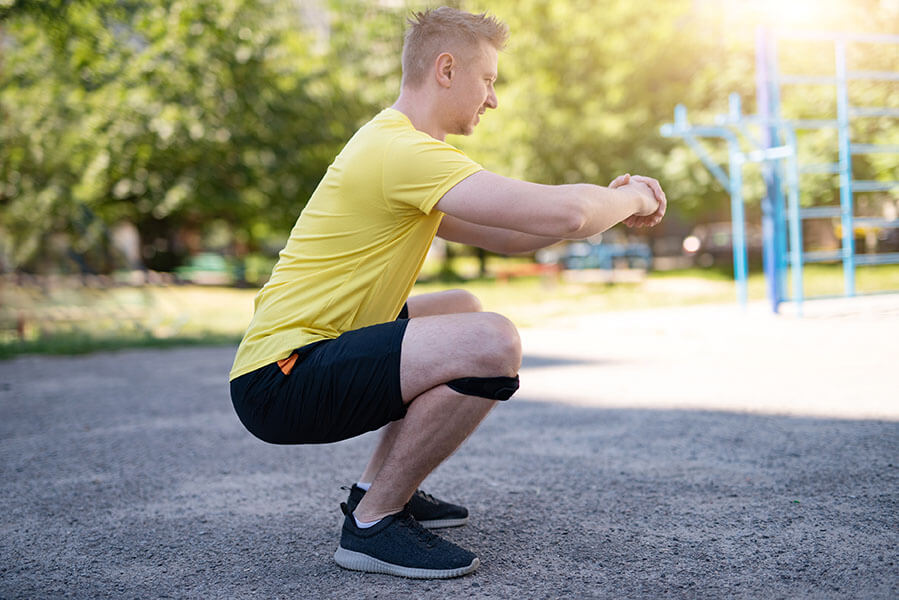Injury Prevention 101
Want to learn what it really takes for injury prevention?
In musculoskeletal physiotherapy practice we see athletes from all walks of life, all ages and all levels of athletic background. Whether it be a national level athlete, a weekend warrior or someone who has decided to shed the unwanted extra Christmas kilos by starting running again after years of ‘letting themselves go’. We are commonly asked ‘what can I do to decrease my risk of injury’. And it is a fair question. Injuries are virtually the sole drawback of exercise. These injuries can be painful, disabling, costly and time consuming. Not to mention the progress lost while you are undergoing rehabilitation. Or worse still, injury striking the week before the triathlon that you have been training all year for. So what is best way to reduce the risk of these injuries? What should you be doing to keep you playing sport, running, cycling and swimming injury free?
Physical activity and exercise has been found important in the prevention and treatment of most common medical conditions including cardiovascular disease, diabetes, cancer, obesity, osteoporosis and depression. The World Health Organisation recommends adults aged 18-64 years of age should do at least 150 minutes of moderate intensity aerobic physical activity or 75 minutes of vigorous intensity physical activity per week.
There have been many studies published over the years that have evaluated the merit of different types of injury prevention exercise programs on differing injuries over many sporting environments. Some common injury prevention modalities or techniques include strength training, stretching, proprioception (balance and control exercises) and combinations of these.


A study in 2014 which reviewed 25 articles has shown that strengthening significantly reduced injury risk whereas stretching provided no significant beneficial effect. These studies compared the effects of multiple injury prevention exercises including strength training, stretching, proprioception exercises and a combination of exercise. The studies also varied in the type of injury they were attempting to prevent. For example, some studies were focused on preventing acute injuries while others attempted to prevent overuse injuries. Some studies were focused on specific parts of the body and even specific structures for example hamstring injuries or ACL injuries. The study reported consistently favourable outcomes for all types of injury prevention program measures except for stretching.
Strength training was the most beneficial showing a 69% risk reduction while stretching showed a risk reduction of 4% (Lauersen et al, 2014). Strength training reduced sports injuries to less than 1/3 and overuse injuries could almost be halved.
So why exactly is there a difference between strengthening and stretching exercise for injury prevention? Well, if we take a look at the biomechanics of the two it does make a lot of sense.
For example strengthening exercise is essentially overloading the muscular system, breaking it down, in order for it to rebuild bigger and stronger. Resistance training increases muscular strength, endurance and size. It also increases the elastic properties of connective tissues such as ligament and tendon. Muscles work to move and stabilise the joints of the bodies. If we have increased muscle strength this can increase our ability to move and stabilise our joints. This can lead to decreased stresses on the joints and decrease risk of instability. This can be likened to shock absorption in a car, as the car hits a bump in the road the springs decrease the impact making the ride a lot smoother. Think about this in the same way as the muscles around all the joints in the body create protection and allow smoother more controlled movement.
On the other hand what are we doing when we are stretching? When we stretch we are attempting to lengthen skeletal muscle. The benefits of stretching are to increase joint range of motion, increase flexibility, and decrease muscular tension and pain. This can aid in recovery post exercise but as the above study shows does not have a significant effect on injury prevention.
Another basic injury prevention and recovery technique that is commonly overlooked and underestimated is sleep. Seems simple right? Studies have shown that athletes that have less than 8 hours sleep per night increased their injury risk by 1.7x compared to athletes that get 8 hours or more. Lack of sleep can impair the release of growth hormone and impair muscle protein synthesis. Simply put this means that your bodys’ ability to adapt to your training and repair skeletal muscle is decreased. For some people getting 8 hours or more sleep per night is easier said than done. Some simple ways to help your sleeping habits include limiting the use of electronic devices an hour before bed and limiting caffine intake after lunch. So if you are reading this on your phone before bed put it away and get some sleep. Don’t forget to finish reading tomorrow however for my final injury prevention technique. (Milewski et al, 2014)
Monitoring and managing your workload is another valuable technique that can assist in decreasing your injury risk. Workload takes into account all training sessions. Whether it be on the bike, in the pool, pounding the pavement, strength training and games or competition. It can be a complex principle but we will try to keep this as brief as possible. The basics are comparing your ‘chronic workload’ (average weekly workload over the previous 4 week period) to your ‘acute workload’ (workload over the past week). If your training includes different modalities such as strength training (which it should), running, swimming and cycling how do you figure out your workload? Using a sessional RPE (rate of perceived exertion where you score each session where 1 is resting and 10 is maximal exertion) and times that by the time in minutes of the session. This will give you a unit number of workload. (Example session RPR = 7 x 60minute session = 420 units). Adding up each session per week and working out a weekly average over 4 weeks gives you your chronic workload. Dividing your acute workload by your chronic workload will give you your acute vs chronic workload ratio. Studies have shown the ‘sweet spot’ for this ratio is between .8 and 1.3. If your workload has decreased and your ratio is below .8 you have an increased risk of injury. Similarly if your ratio is above 1.3 you have an increased risk of injury.
The take away messages here: By all means continue to stretch for recovery post exercise. But if you are time poor like most of us and you want ‘bang for your buck’ strengthening wins hands down. Monitor you training loads and try to keep in the ‘sweet spot’ (acute vs chronic workload ratio 0.8-1.3) And don’t forget the basics. Try to get at least 8 hours sleep per night. If you are reading this too late and are already injured or would like any advice on specific strengthening or injury prevention programs contact the team at Vector Health.
Lauersen JB, Bethelsen DM, Andersen LB. The effectiveness of exercise interventions to prevent sports injuries: a systematic review and meta-analysis of randomised controlled trials. British Journal of Sports Medicine. 2014 48:871–877.
Milewski MD, Skaggs DL, Bishop GA, Pace JL, Ibrahim DA, Wren TA, et al. Chronic lack of sleep is associated with increased sports injuries in adolescent athletes. Journal of pediatric orthopedics. 2014 Mar;34(2):129-33. PubMed PMID: 25028798. Epub 2014/07/17. eng.
About the Author:
Greg Cook joined Results Chandler in 2017 and has over 9 years’ experience in the musculoskeletal and sports setting. As well as working in private musculoskeletal practice since 2009 Greg has worked in the professional sport setting with the following teams;
North Queensland Cowboys (2010-2015)
Papua New Guinea National Cricket Team (2015)
Brisbane Broncos Rugby League Club (2015-Present)
He has been working with the Brisbane Broncos since 2015 involved in managing their NYC (under 20’s) and Elite Player Development squads. Greg has also worked at the local level with a variety of sports including soccer, swimming, rugby league and cricket.
Greg enjoys treating all patients and presentations but has developed a keen interest in acute injury management, injury prevention and postsurgical management of the knee and shoulder.
